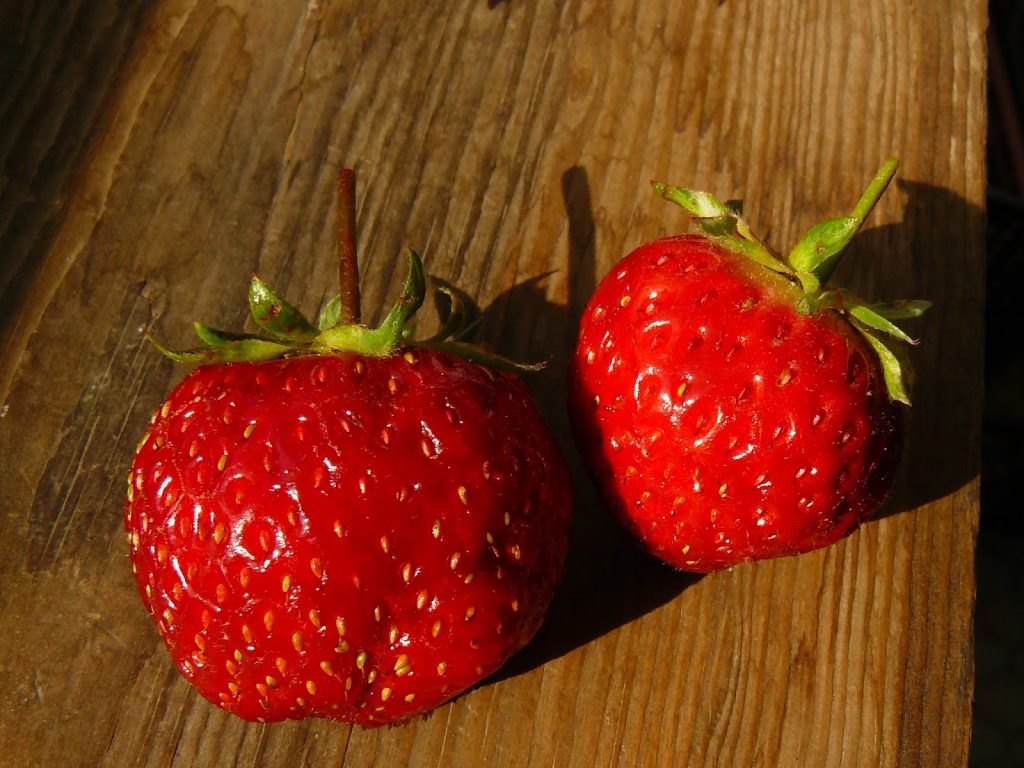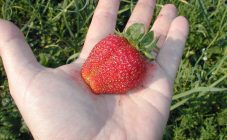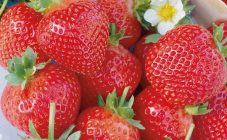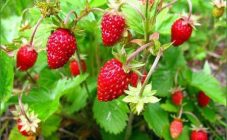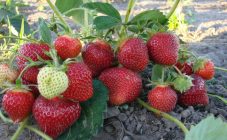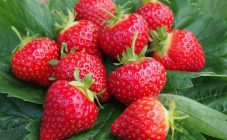Content:
Strawberry Daryonka is a selectively bred variety with a very early ripening period from the Rusanovka variety, as well as frost resistance from Festivalnaya. The variety was bred for the northern regions of Russia, which are characterized by a fleeting spring with a return of low temperatures, as well as severe winters with frosts. A team of breeders of the Sverdlovsk breeding station under the leadership of I.I.Bogdanova worked on the breeding of Darenka. The variety was entered in the State Register in 2004 under the code 9705077.
Characteristics and features of the variety
According to gardeners-gardeners, Daryonka's strawberry not only quickly takes root on different soils, but also tolerates transplanting well, gives a high yield of tasty and aromatic berries. Strawberry Darenka has the following description of the variety and characteristics of varietal qualities.
Characteristics and description of the culture
To obtain consistently high yields from year to year, it is required to properly care for strawberry plantings in compliance with the rules and techniques of agricultural technology.Characteristic Description Bush Medium-sized, erect type, with large leaves of light green color, they resemble a boat in shape and are covered with thin fibers. Gives some mustache of medium thickness, reddish color. Mustache In terms of the number of whiskers, they are few, have an average thickness, a reddish tint. Flowers Peduncle - thin, located slightly above the level of the leaves, compact inflorescences, white flowers. Berries Medium-large, weighing up to 10 gr., Color - dark red, berry shape - round, conical, with slight ribbing. The pulp is dense, juicy with small achenes. According to the tasting score, it has a score of 5. The taste is sweet with sourness. Reproduction Propagated by all kinds: mustache (which has taken root), seeds, bush division. Yield Gives berry picking up to 1.2 kg per 1 m2, once per season. Yield rate A good stable harvest for 5 years, then the strawberries should be transplanted, preferably in places where they previously grew: carrots, onions, legumes, beets. Diseases Even with an excess of moisture in the soil, resistance to gray rot is observed. Frost resistance It tolerates severe cold, but requires shelter in winters with little snow. Using The use is universal. The berries have a high degree of transportability while keeping their fresh appearance.
Agrotechnics of strawberries Darenka
Choosing a planting site and preparing the beds
There should be no tall trees and drafts nearby in the place for strawberry growth, there should be good sunlight.
To prepare the soil - to dig to a depth of at least 30 centimeters and loosen it (this is done to check for the presence of pests and their larvae), it is also necessary to ensure that the top layer of the soil is heated to protect it from various types of rot. After loosening, remove all weeds.
Add moor peat to the heated soil at the rate of 12 liters per 1 m2. You can also fertilize the soil with mineral fertilizers without chlorine instead of peat. Form the beds to a height of 20 cm, the distance between the beds should be at least 40 cm, and best of all - 60. The height of the beds is necessary to protect the roots from waterlogging in spring. Dig holes in the beds to the depth of the length of the seedling roots. The distance between the holes is 50-60 cm, for better ventilation of future bushes.Cover the prepared beds with holes with black foil and cut holes in it for seedlings. Planting seedlings on the beds should be carried out in a week, since it is necessary to wait for the beds to shrink.
Seed preparation and seedling growing
To grow seedlings on your own, you should first wet the seeds with water and put them on a damp paper towel in a plate. Place the plate in a plastic bag and place in a sunny place, avoiding direct sunlight. As soon as the roots appear, sow the seeds into the soil to a depth of ½ cm, with a distance of 2 cm between the seeds. After the first leaves appear, transplant each bush into a separate planting container.
Landing
It is recommended to start planting seedlings from late April to early May. The best time to land is evening. After planting, water the seedlings generously and cover the beds with foil, having previously installed the frame. Keep the planted strawberry bushes under the film until flowering. Water every day to root the bushes, then reduce watering to twice a week.
Care
Daryonka's strawberries do not require special care, but to get a richer harvest, you need to water, feed, and also remove excess whiskers and thin out overgrown bushes.
You need to water with settled water at the rate of 12-15 liters per 1 m2. In the summer, in the heat, watering at least three times a week, and in the fall - once a week. The best time to water is early morning.
It is necessary to start feeding strawberries from the second year of cultivation. The feeding scheme is as follows:
- 1) After the snow melts and the soil warms up (end of April) - fertilizers should contain nitrogen to stimulate the growth of green mass. Apply top dressing under each bush.
Recipe number 1. Urea (1 tbsp. L.) + Water (10 l.). Pour ½ l under the bush.
Recipe number 2. Calculation for 1 bucket of water: cow dung (2 glasses) + ammonium sulfate (1 tbsp. L). Use this recipe in the third year, having previously loosened and covered the soil with ash.
- 2) Before flowering and after harvesting, feed with wood ash. Calculation of ash per 1 m2: 3 glasses in dry and liquid form at the rate of 1 glass of ash per 10 liters of water. Pour ½ l under each bush.
- 3) At the end of August, fertilize with phosphorus-potassium fertilizers. Potassium is needed to increase the sugar content in berries, and phosphorus is needed to support photosynthesis. You can use potassium nitrate, potassium sulfate, potassium magnesium; for phosphorus dressings, superphosphate is the best.
For the prevention of diseases and pest infestations, use onion peels. To scare away insects, scatter the husks in the aisles of the strawberries. Watering with a decoction of onion peel.
Recipe number 3. Onion peel (4 cups) + water (10 l). Bring to a boil, cool. Use at the rate of 2 liters of broth per bucket of water.
Advantages and disadvantages
Varietal type of strawberry Darenka has the following advantages over other varieties grown in Siberia:
- high degree of frost resistance;
- resistance to strawberry mites and rot varieties;
- good survival properties of bushes when transplanting to a new place;
- great taste of fresh berries;
- high yield from the first year of cultivation;
- high degree of transportability while maintaining the appearance and freshness of the berry.
Garden strawberry variety Darenka has no shortcomings.
